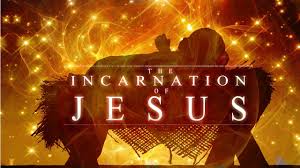
The doctrine of the Incarnation of Jesus Christ is a cornerstone of Christian theology, encapsulating the belief that He, the second person of the Trinity, took on human flesh to live among us. This profound mystery asserts that Christ is both fully divine and fully human, bridging the infinite gap between God and humanity. This article delves into the scriptural basis, historical development, and theological significance of the Incarnation.
Scriptural Foundations
The New Testament provides the primary scriptural evidence for the doctrine of the Incarnation, with several key passages underscoring the belief that Jesus Christ is both God and man.
– John 1:1, 14
“In the beginning was the Word, and the Word was with God, and the Word was God… And the Word became flesh and dwelt among us.” These verses from the Gospel of John explicitly state the divine nature of the Word (Logos) and its incarnation.
– Philippians 2:6-7
Paul describes Jesus, who, “though he was in the form of God, did not count equality with God a thing to be grasped, but emptied himself, by taking the form of a servant, being born in the likeness of men.” This passage highlights the voluntary act of humility in the Incarnation.
– Matthew 1:23
Matthew’s Gospel quotes Isaiah 7:14, “Behold, the virgin shall conceive and bear a son, and they shall call his name Immanuel” (which means, God with us). This prophecy underlines the divine presence in Jesus’s humanity.
– Hebrews 2:14-17
The author of Hebrews emphasizes Jesus’s shared humanity with us, stating that he “had to be made like his brothers in every respect” to be a merciful and faithful high priest.
Historical Development
The early Church grappled with understanding and articulating how Jesus could be both God and man. Several heresies arose, challenging the orthodox understanding of the Incarnation, prompting the Church to clarify its doctrine.
– Council of Nicaea (AD 325):
While primarily addressing the divinity of Christ in response to Arianism, this council affirmed the eternal generation of the Son from the Father, laying the groundwork for a fuller understanding of the Incarnation.
– Council of Ephesus (AD 431):
This council confronted Nestorianism, which proposed a division between the divine and human natures of Christ. The council affirmed the unity of Christ’s person, declaring Mary as Theotokos (God-bearer) to emphasize that Jesus is truly God in the flesh.
– Council of Chalcedon (AD 451):
The Chalcedonian Definition was a landmark in Christological doctrine, articulating that Jesus is to be acknowledged in two natures, “without confusion, without change, without division, without separation.” This affirmed the complete divinity and complete humanity of Jesus Christ in one person.
Theological Significance
The Incarnation is not merely a doctrinal assertion but a profound expression of God’s love and involvement with creation. It signifies that God has not remained distant but has entered into human history and experience.
– Salvation:
The Incarnation is central to the Christian understanding of salvation. By taking on human nature, Jesus was able to atone for human sin through his death and resurrection, offering reconciliation between God and humanity.
– Revelation:
In Jesus Christ, God’s character and love are made known. The Incarnation reveals God in a way that is accessible and relatable to humanity.
– Sanctification:
The Incarnation affirms the goodness of creation and the human body, providing a model for holy living. Jesus’s life demonstrates how to live in obedience to God’s will.
Conclusion
The doctrine of the Incarnation stands as a testament to the depth of God’s love for humanity, bridging the divine and human in the person of Jesus Christ. It challenges believers to embrace the mystery of God made flesh and to live in the light of this profound truth. Through the Incarnation, Christians are invited into a relationship with a God who is intimately acquainted with the human condition, offering hope, redemption, and transformation.